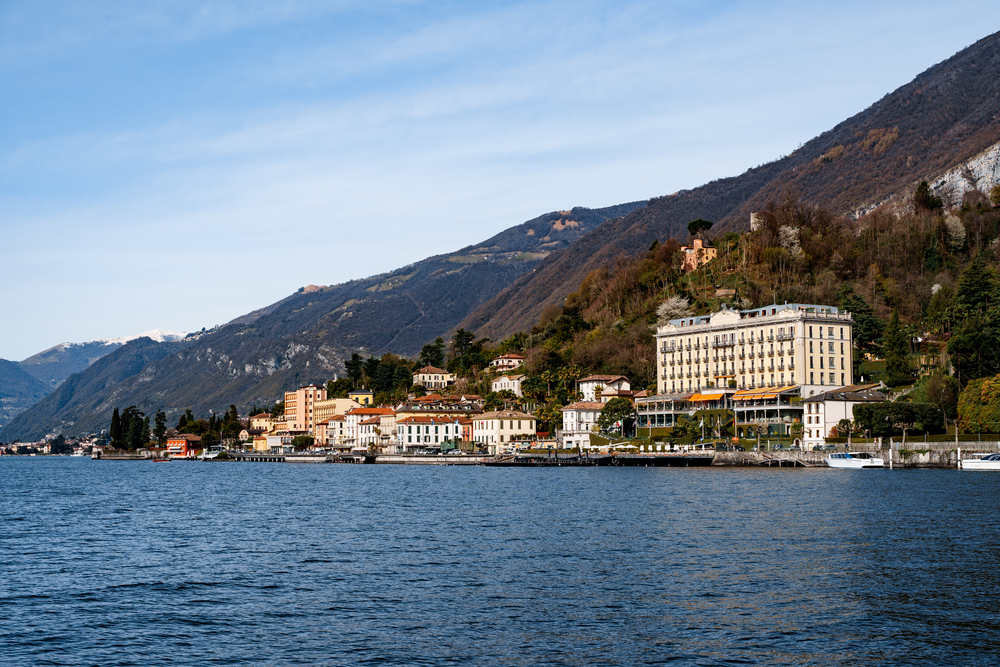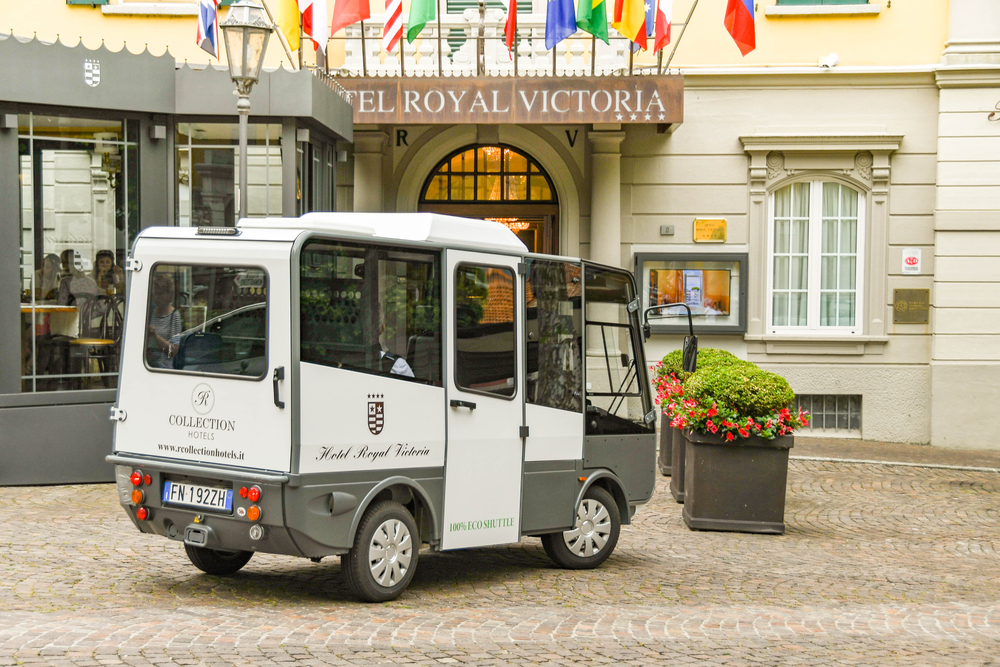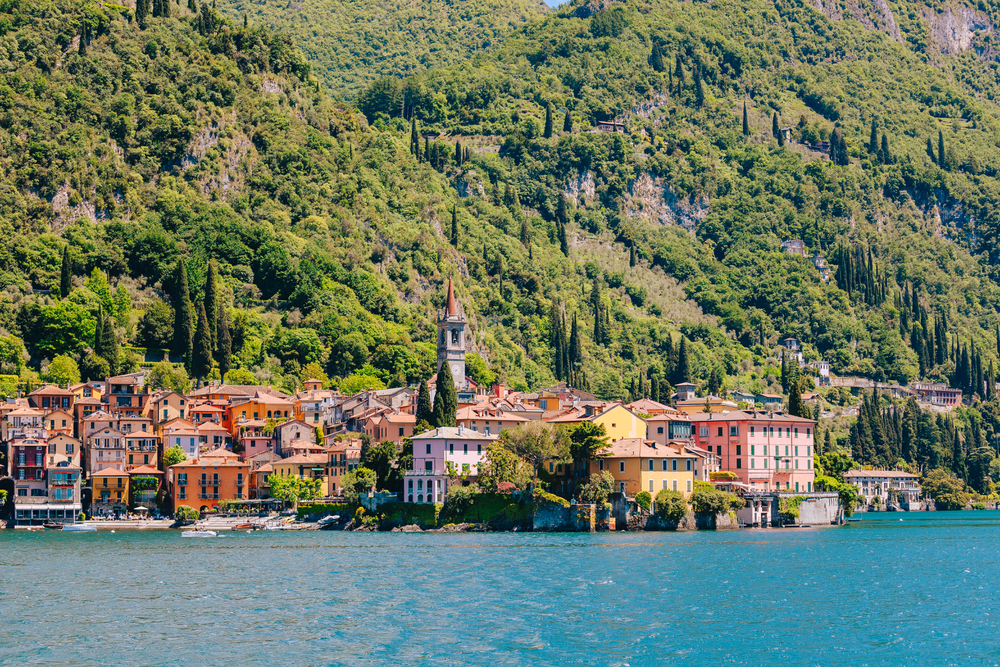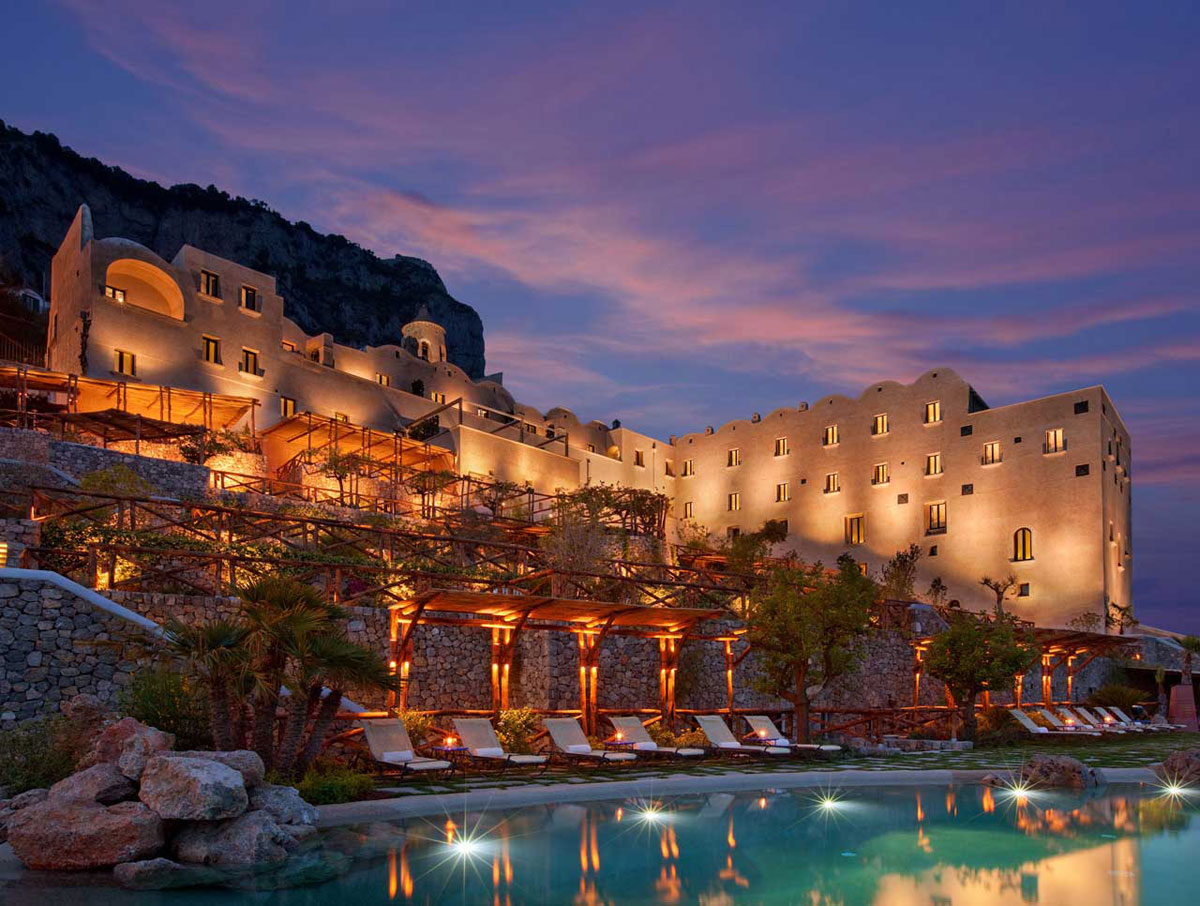Italy presents travelers with an enviable dilemma between two legendary destinations—Lake Como’s elegant northern lake district or the Amalfi Coast’s dramatic southern shoreline. Both regions showcase Italy’s remarkable beauty yet deliver distinctly different experiences beneath their photogenic surfaces.
Each destination excels in specific aspects while potentially disappointing visitors with mismatched expectations. Here is a list of 16 key differences that highlight how these iconic Italian escapes “hit different” to help you choose the destination that aligns with your travel priorities.
Water Experience

Lake Como offers a freshwater experience with transparent alpine waters, creating a distinct atmosphere from Mediterranean coastlines. The lake’s calm, consistent waters allow for reliable swimming and boating without the tides or strong currents typically found in Mediterranean settings.
Lucia boats (not Lucias) are traditional wooden boats in the region, used alongside modern water taxis. The Amalfi Coast presents dynamic Mediterranean seascapes with ever-changing colors influenced by weather conditions and sunlight angles.
Saltwater swimming provides buoyancy, while hidden coves are accessible only by boat, rewarding adventurous travelers with private swimming spots beneath towering cliffs.
Landscape Drama

The Amalfi Coast delivers a more immediate visual impact through vertical landscapes where mountains meet the sea without a gradual transition. Precarious roads carved into cliffsides create dramatic approaches to colorful villages that appear impossibly perched above crashing waves.
Nearly every viewpoint offers breathtaking panoramic views that photographers often call the ‘money shot,’ with minimal effort required to capture stunning vistas. Lake Como reveals its beauty more gradually through elegant perspectives that unfold between stately villas and carefully cultivated gardens.
The landscape feels deliberately composed rather than dramatically imposed—human enhancement of natural beauty rather than survival despite natural challenges.
Like Travel Pug’s content? Follow us on MSN.
Historical Layers

Lake Como presents a richer historical context through centuries of continuous development by noble families and cultural figures. The lake shores feature Roman foundations beneath medieval villages that expanded during Renaissance prosperity and were decorated during Enlightenment periods.
Visitors experience chronological layers visible in architecture, garden design, and cultural traditions maintained across generations. The Amalfi Coast concentrates historical significance in specific locations like Ravello’s Villa Rufolo or Amalfi’s Cathedral rather than distributing it evenly throughout the region.
Its dramatic landscape limited consistent development, creating more distinct historical moments rather than continuous evolution visible in built environments.
Architectural Styles

Lake Como features elegant neoclassical villas with symmetrical facades and formal gardens reflecting northern Italian architectural traditions influenced by nearby Austria and Switzerland. These substantial structures project permanence and generational wealth through measured proportions and restrained ornamentation.
The villa culture remains visible in properties maintained by wealthy families for centuries or converted into museums and hotels. The Amalfi Coast presents more organic architectural development with buildings that appear almost to grow from cliffside foundations.
Colorful Mediterranean facades stack vertically with irregular shapes, adapting to challenging topography rather than imposing geometric order on landscapes. This creates more picturesque visual interest but less architectural uniformity.
Garden Traditions

Lake Como features world-class formal gardens designed as extensions of villa architecture with geometric layouts, sculptural elements, and carefully framed views across the water. Villa Carlotta and Villa Balbianello exemplify the northern Italian garden tradition where botanical collections showcase specimens from global exploration during imperial periods.
These spaces reveal human ordering of nature through deliberate design rather than adaptation to natural conditions. The Amalfi Coast presents more naturalistic gardens where Mediterranean plants cascade down terraced landscapes designed to capture rainfall and prevent erosion.
Lemon groves and vertical herb gardens demonstrate practical horticultural traditions developed in response to challenging growing conditions rather than purely aesthetic considerations.
Like Travel Pug’s content? Follow us on MSN.
Celebrity Culture

Lake Como maintains discreet luxury traditions where celebrity residents like George Clooney integrate into local communities behind villa walls. The lake’s long history as an aristocratic retreat creates cultural norms protecting privacy despite international fame. Visitors might glimpse celebrities during ordinary village activities rather than staged appearances.
The Amalfi Coast attracts more visible celebrity tourism with Instagram moments documented along iconic viewpoints and exclusive beach clubs. Star-spotting becomes part of the experience through yacht-watching from coastal restaurants and noting which tables receive special attention in popular establishments.
Dining Atmosphere

Lake Como offers more formal dining experiences emphasizing traditional northern Italian cuisine served in elegant settings with precise service traditions. Lakeside restaurants often feature white tablecloths, career servers, and multi-course meal structures maintained for generations.
The overall atmosphere tends toward refined conversation rather than animated social mixing. The Amalfi Coast presents more casual Mediterranean dining with an emphasis on fresh seafood and regional specialties served in settings where views often take precedence over formality.
Restaurants frequently feature outdoor terraces where patrons move between tables, greeting friends and watching coastal activity below.
Seasonal Variations

Lake Como experiences more distinct seasonal changes, with fall foliage creating dramatic reflections across water surfaces, followed by winter dormancy and spring blooming periods. This natural rhythm creates distinctly different experiences depending on visit timing, with shoulder seasons offering particular appeal through changing light conditions.
The Amalfi Coast maintains a more consistent Mediterranean ambiance with evergreen vegetation, creating similar visual experiences across longer tourist seasons. The most significant seasonal variation comes through changing visitor density rather than natural landscape transformation between seasons.
Like Travel Pug’s content? Follow us on MSN.
Village Atmosphere

Lake Como villages present a more reserved northern Italian character with architectural consistency and subdued color palettes throughout most settlements. The overall atmosphere tends toward quiet elegance rather than vibrant social energy, with evening activities centered around restaurant dining and leisurely promenades rather than animated public gatherings.
The Amalfi Coast delivers more colorful southern Italian village life with ceramic decorations, bright building facades, and public squares filled with mixed local and tourist activity throughout the day and evening hours. Visitors experience more spontaneous interaction within these Mediterranean communities.
Physical Accessibility

Lake Como offers more accessible experiences for visitors with mobility considerations through relatively flat waterfront promenades in major villages and regular ferry services between destinations. The primary transportation system—water taxis and ferries—inherently accommodates passengers without requiring significant physical exertion.
The Amalfi Coast presents substantial physical challenges through extensive stairways connecting vertical layers of villages built into cliffs. Even reaching restaurants or viewpoints often requires navigating uneven stone steps without modern accessibility accommodations.
The region’s dramatic beauty comes with inherent physical requirements that may exclude some travelers.
Shopping Experiences

Lake Como features sophisticated shopping emphasizing high-quality craftsmanship and understated luxury rather than tourist souvenirs. Small boutiques offer locally made silk products, continuing traditions established through centuries of textile production in nearby Como city.
The shopping experience tends toward quality investment pieces rather than vacation mementos. The Amalfi Coast offers an array of shopping, from charming souvenirs like handmade paper from Amalfi to ceramics from Vietri sul Mare.
The shopping atmosphere feels more accessible to casual browsers rather than serious collectors, with products reflecting Mediterranean aesthetics.
Like Travel Pug’s content? Follow us on MSN.
Guest Demographics

Lake Como attracts visitors seeking refined experiences within discreet luxury traditions established over centuries of aristocratic tourism. The atmosphere appeals to travelers interested in cultural history, architectural traditions, and elegant social customs rather than energetic nightlife or beach culture.
The average visitor tends toward mature travelers with an appreciation for subtle experiences. The Amalfi Coast draws more diverse visitor demographics, including younger travelers attracted by Instagram-famous views, honeymoon couples seeking romantic settings, and multigenerational families exploring iconic Italian destinations. The atmosphere accommodates more varied travel styles within the same region.
Transportation Experience

Lake Como centers transportation around water taxi and ferry services, creating relaxed transitions between destinations with minimal logistical stress. The pleasure of arrival by boat adds aristocratic flair to even modest accommodations, while vintage wooden water taxis provide elegant transportation without traffic concerns.
The Amalfi Coast requires more complicated logistics dominated by the famous coastal road—simultaneously spectacularly beautiful and notoriously challenging. Public SITA buses navigate hairpin turns alongside luxury convertibles and buzzing Vespas in choreographed chaos that thrills some travelers while terrifying others.
Daytrip Possibilities

Lake Como offers convenient access to diverse northern Italian experiences through day excursions to nearby cities and Alpine landscapes. Visitors can reach Milan’s cultural attractions, explore Swiss Alpine villages, or visit neighboring Lake Maggiore while maintaining a single comfortable base.
The transportation infrastructure facilitates varied experiences without changing accommodations. The Amalfi Coast connects travelers to southern Italy’s archaeological treasures, including Pompeii and Herculaneum, alongside island excursions to Capri and Ischia.
These significant attractions often require full-day commitments rather than casual visits but provide world-class historical experiences alongside coastal beauty.
Like Travel Pug’s content? Follow us on MSN.
Culinary Traditions

Lake Como showcases northern Italian cuisine emphasizing rich risottos, freshwater fish preparations, and Alpine-influenced meat dishes served with polenta rather than pasta. Local specialties include missoltini (preserved lake fish) and distinctive olive oils produced in microclimate conditions unique to lakeside terraces.
The culinary style reflects proximity to Switzerland and Austria through butterfat cooking techniques rather than Mediterranean olive oil traditions. The Amalfi Coast presents quintessential southern Italian cuisine centered around fresh seafood, lemon-infused dishes, and simple pasta preparations highlighting regional produce.
The coastal location means dining often includes seafood hauled from waters visible from restaurant tables alongside produce grown on nearby terraces.
Natural Light

Lake Como experiences distinctive light conditions created through reflection between mountain surfaces and water—creating what photographers call “lake light” that softens landscapes through multiple reflective surfaces. Morning mist rising from water creates ethereal conditions that transform familiar views into dreamlike scenes during the early hours.
The Amalfi Coast benefits from Mediterranean clarity, where intense sunlight creates sharp contrasts between whitewashed buildings, blue waters, and verdant vegetation clinging to cliff faces. The southern exposure creates longer daylight hours and golden evening illumination that bathes vertical landscapes in warm directional light.
Making Your Italian Choice

Neither destination inherently outranks the other—the “better” choice depends entirely on aligning your travel priorities with each region’s natural character. Lake Como excels for travelers seeking elegant refinement, historical depth, garden appreciation, and discreet luxury within northern Italian cultural traditions.
The Amalfi Coast delivers more dramatic visual impact, vibrant Mediterranean energy, southern Italian hospitality, and iconic coastal scenery immortalized in countless films and photographs.
The most satisfying Italian escape ultimately comes from selecting the destination that naturally complements your travel temperament rather than attempting to force either region into delivering experiences counter to its essential character.
Like Travel Pug’s content? Follow us on MSN.
More from Travel Pug

- Cities Growing so Fast You Won’t Recognize Them in 10 Years
- 13 Destinations Where Tourists Regularly Regret Their Trip
- 20 Obscure WWII Sites Even History Buffs Don’t Know About
- 10 Under-the-Radar Mountain Towns That Are Both Affordable and Beautiful
- Remote Villages in Europe Where You Can Live for Free in Exchange for Work
Like Travel Pug’s content? Follow us on MSN.
